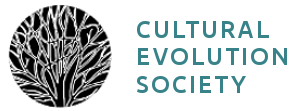Dynamic Models of Human Systems
Module Contents
Introduction
Models come in many forms, verbal, mathematical, static and dynamic. We introduce the basic formalism of dynamic models in a way that is understandable at the verbal level.
Individual Models
-
Population Growth (pdf)
This first simple Malthus population model introduces Stella Graphic flow model symbology and terminology. It also demonstrates the inherent dynamic tendency of populations to explode toward infinity, a tendency Malthus suggested would always be limited by unpleasant checks like starvation, pestilence, and sexual abstinence. Each of the remaining seven models covers a phase in the growing importance of cultural evolution dynamics from a planetary perspective. Malthus' model remains an element in all of them. - Basic Hunter-Gatherer (pdf) For about two million years, hominid technology improved very slowly. Hominids were rare, and the primary dynamic was changes in the hunter/prey populations, including the constantly repeating classic "rabbit and fox" boom and bust oscillation modeled by Lotka-Volterra linked differential equations.
-
Hunter-Gatherers with Evolving Technology (pdf)
More recently, our species' hunting technology—thanks to cultural evolution—evolved faster than prey genetic evolution could counter it. The explosive growth of our once rare species led to the mass extinctions of the large game animals that human hunters preferred in many areas of the globe. -
Basic Farming (pdf)
As megafauna sources of food dwindled or went extinct, and the global weather improved, a shift to farming provided more efficient utilization of land, allowing the human population to gradually grow in a brief era of relative stability. -
Farming with Dynamic Technology (pdf)
However, as the pace of farming technology improvements quickened, farming became dynamically unstable. The positive feedbacks inherent in technological progress supercharged farming mutualisms, causing human populations, locally, to explode toward infinity until they crashed into the ceilings of starvation and pestilence noted by Malthus. -
Dynamics of Civilizations (pdf)
Civilizations, which introduced non-farming elites (kings, priests, soldiers, and artisans), added yet another dynamic as the farmers and elites competed for limited resources. This competition often resulted in civilizations having dynamic "rabbit and fox" boom and bust cycles, an oscillation demonstrated by Peter Turchin's Selfish Elites model. -
Exogenous Economic Growth (pdf)
However, with the recent advent of the industrial and agricultural revolutions, production—thanks to accelerating technological advances as modeled by Nobel Laureate economist Robert Solow—increased even faster than the rapidly ballooning human populations, thus avoiding the nasty Malthusian checks (at least temporarily). -
World Dynamics (pdf)
In the long run, however, Solow's rapid technological advances could not stop the dynamic cultural evolution of humanity from heading toward Infinity. On the way, necessarily, we will run head-on into firm, unyielding planetary ceilings as famously modeled by Jay Forrester and Donella Meadows in their Limits to Growth. The hunt for a way to evade Malthusian checks goes on.
Zip file of Stella programs (download)
Dynamic Systems Thinking and Modeling: Narrative and Graphic
This narrative provides an overview of the first chapter of Barry Richmond’s 2001 An Introduction to Systems Thinking, a guide to constructing models in Stella software, discussing the three interdependent systems processes – thinking, communicating, and learning.
This project was supported by Grant #61105 from the John Templeton Foundation to the University of Tennessee, Knoxville (PIs: S. Gavrilets and P. J. Richerson) with assistance from the Center for the Dynamics of Social Complexity and the National Institute for Mathematical and Biological Synthesis at the University of Tennessee, Knoxville.

The Cultural Evolution Society's Online Learning Tutorial Series is licensed under a Creative Commons Attribution-NonCommercial-ShareAlike 4.0 International License. For designers' contact information, click here.



